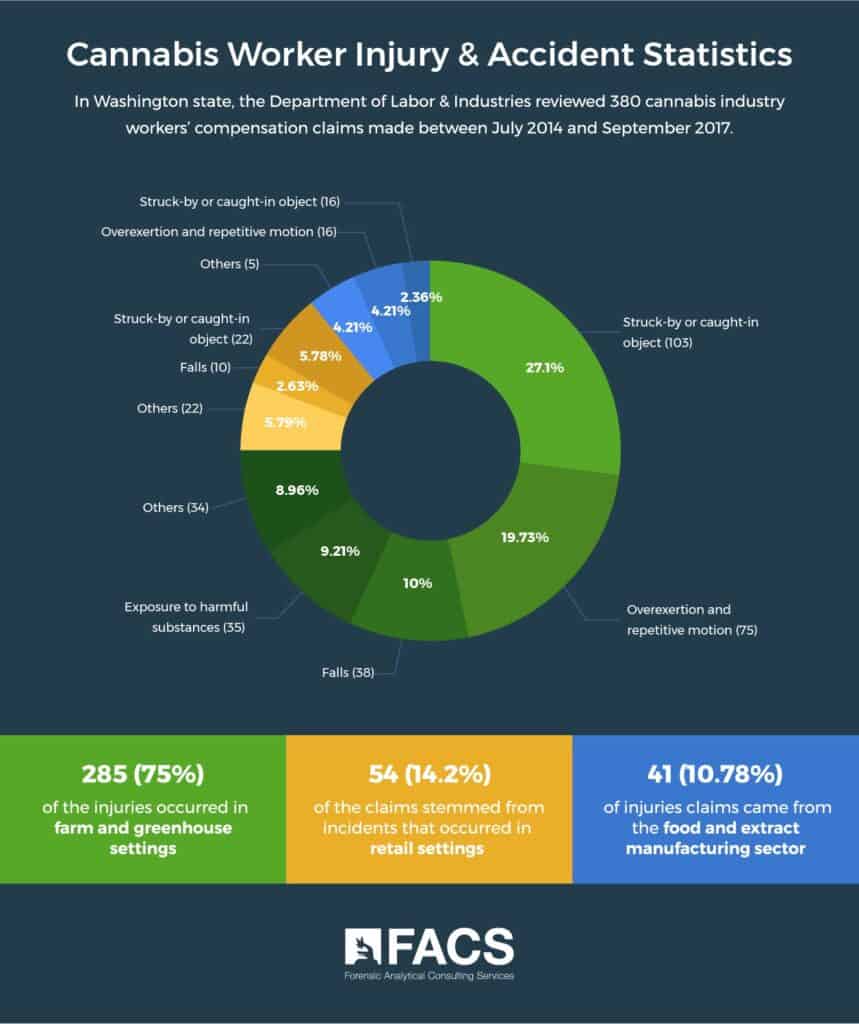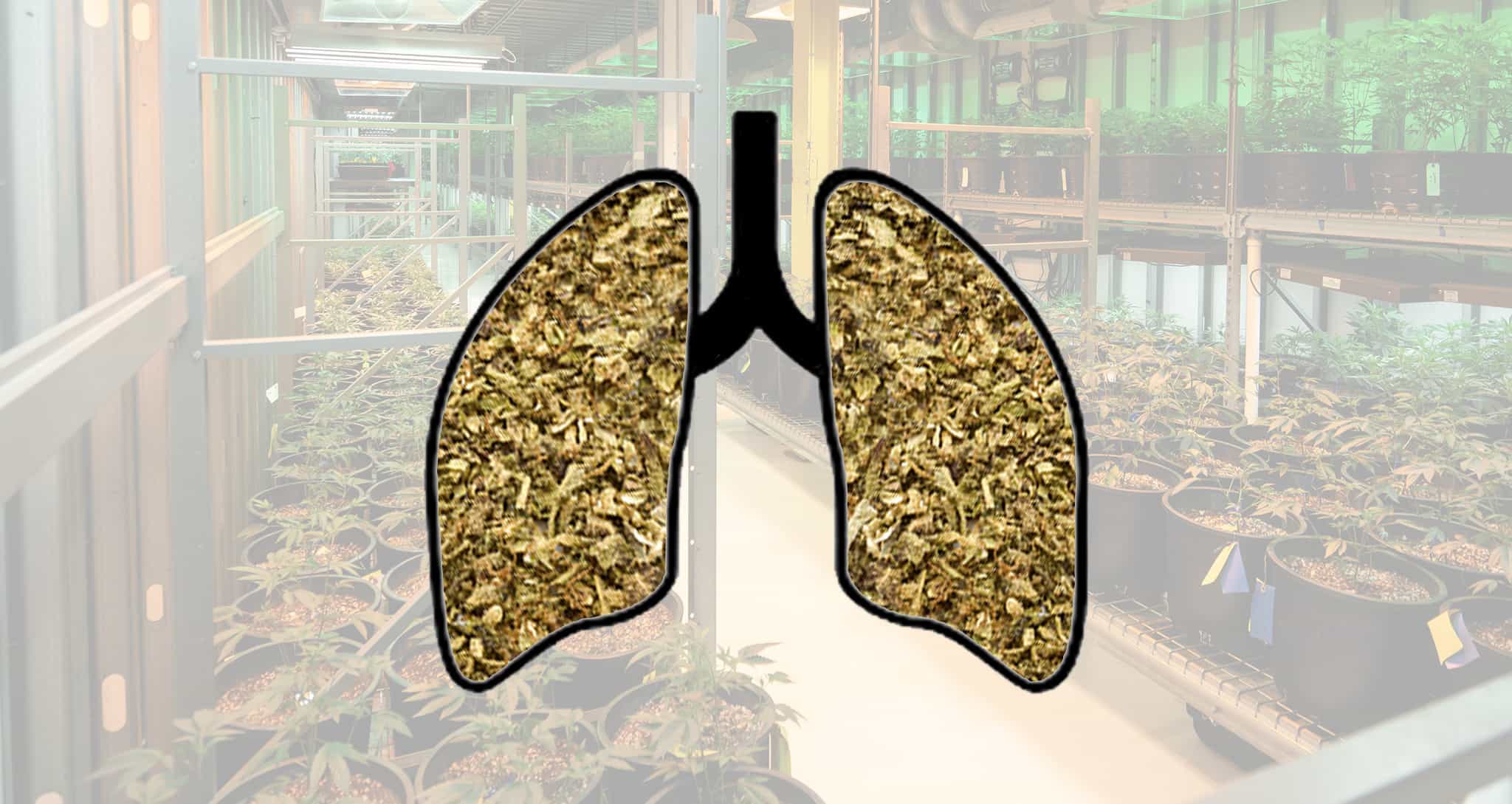Lorna McMurrey’s death almost went unnoticed by the world. Other than the loving family and friends she left behind, and her fellow employees at the facility where she worked, few people would have been aware of the 27-year-old’s death, as unusual and tragic as it may have been.
McMurrey died at the beginning of the year at a Massachusetts cannabis facility owned by Florida-based Trulieve. Her employers were served a violation by the Occupational Safety and Health Administration, but the story didn’t make the news until eight months later when The Young Jurks, a Massachusetts-based cannabis podcast, published the first in a series of episodes on the bizarre circumstances surrounding McMurrey’s untimely death and the underwhelming response from Trulieve. The story was soon picked up by other cannabis news outlets, eventually making its way into the mainstream news.

Some reporting seemed to indicate that McMurrey died of heart failure, but a letter sent to the company following an OSHA investigation does not mince words, citing the cause of death as “occupational asthma due to exposure to ground cannabis.”
For some, the notion of severe respiratory issues caused by exposure to cannabis may seem outlandish, but actually the phenomenon is so common that workers have a colloquial name for it: “green lung.”
“The big problem today is a lack of information and a lack of understanding of what might be causing the respiratory illness and respiratory disease in cannabis workers,” says Christopher Simpson, professor of exposure science at the University of Washington’s School of Public Health, Environmental and Occupational Health Sciences. Simpson, whose work was cited in the OSHA letter sent to Trulieve, has been studying workplace hazards in the cannabis industry since Washington began adult-use sales in 2014.
Initially, Simpson says his work examined potential UV exposure from the harsh artificial light of indoor grows, but he soon found a more pressing concern from cannabis workers responding to the surveys that made up his early investigations.
“As part of doing that project, getting to talk one on one with the workers, it became clear that they were also concerned about respiratory exposures,” says Simpson.
Simpson began to examine air quality in commercial cannabis facilities, assessing airborne particulates and volatile organic compounds (VOCs), measuring employee lung function and airway inflammation, and conducting allergen tests.
While by no means definitive, Simpson’s findings seem to indicate allergic reaction as central to the respiratory issues reported by cannabis workers. “The evidence certainly points to the fact that cannabis can be an allergen; there are proteins in the cannabis plant that can result in an allergic response. However, in cannabis there are several other exposures that could also result in an allergic response,” he says. “We don’t know that it’s only one thing.”
Cannabis plants have evolved to produce compounds meant to deter predation. Many of these compounds are desirable to modern consumers, things like cannabinoids and terpenes, and have been intentionally bred into higher concentrations in commercial cannabis. Handling and processing cannabis plants puts workers into contact with these VOCs, and Simpson’s findings indicate that airborne particulates can be especially high in areas where plants are trimmed or dried flower is processed into pre-rolls. But, as Simpson points out, these compounds aren’t the only possible culprits in allergic reaction.
Of particular concern for green lung in cannabis grows are molds and mildews, organic contaminants that often thrive in the humid environments. While the effects of naturally occurring compounds in cannabis may not be well studied, the effects of these organic pathogens on respiratory health is better understood, says Sylvia Fontes, a principal consultant with Forensic Analytical Consulting Services Inc. Fontes, who draws from thirty-six years of experience in industrial hygiene, sees these undesirable intruders as a likely source of the respiratory issues faced by cannabis workers.

Fontes is chair of the Cannabis Industry Health and Safety Committee of the American Industrial Hygiene Association, where she is working on a white paper that will present all health and safety hazards within the cannabis industry. Despite this position, she admits there’s still much that’s unknown about the causes of respiratory illness within the cannabis industry.
“The awareness is minimal at this point, for all of us,” says Fontes. Due to the relative youth of the legal cannabis industry, understanding the hazards to workers may take time, and she warns that some threats to health and safety may not be fully assessed for years to come.
While the allergenic properties of molds are well documented, according to Fontes, “There are some properties of cannabis that are unique to this agricultural product that we don’t see elsewhere.” Understanding the specific causes of respiratory illness in cannabis workers is further complicated by the fact that many cannabis workers are also cannabis consumers, she says.
Simpson doesn’t see this as as much of an issue, but personal experience using cannabis may lull workers into a false sense of security. “There were very few people who entered the industry aware that there was the potential that they could develop occupational asthma,” says Simpson. “There’s certainly some difference between the exposures that you get in terms of smoking cannabis compared to the potentially really high levels of dust or really high levels of terpenes that are present in some of these facilities.”
Simpson admits there are challenges in his scientific assessments, such as the lack of standardized allergen and antibody tests for cannabis compounds. While a third of workers tested showed some sort of allergy to the tests Simpson carried out, identifying the exact compound remains elusive. “That test result tells us there was something in the cannabis dust that created an allergic response in the workers, but it doesn’t even tell us if it’s associated with the cannabis plant,” he says.
Determining the exact cause of this green lung phenomenon may be years away, but in the meantime steps can be taken to mitigate whatever is causing it. Fontes says she doesn’t see new regulation as necessary, just industry compliance with the existing standards. “There’s regulation that if they’re in compliance, they should protect the health of the worker,” she says.
Existing health and safety standards outlined by OSHA currently extend to the cannabis industry, and in California, where Fontes says she’s already consulted with a number of operators, state-level agencies have deferred to federal authority. At present, there do not appear to be any more stringent health codes relating to respiratory protections for cannabis workers in any legal states.
On the FACS website, Fontes lays out the hierarchy of solutions to industrial hygiene issues. Beginning with elimination of the source of the hazard — obviously not possible if the source is the product itself — the next best option comes in engineering solutions. For airborne hazards this could mean equipping problem areas with fume hoods to extract and filter contaminated air. The next step down the hierarchy of solutions is to limit employee exposure, which can be accomplished through practices like rotating employees through high-risk jobs. Finally, the bottom of the safety hierarchy is to simply equip employees with proper personal protective equipment and the knowledge to utilize it properly. In cannabis production facilities, this can mean gloves and other items that prevent skin contact with plants, and notably n-95 masks and training on their proper use. Employees relying on n-95 masks should be aware of their diminished effect when worn over a beard.
Employee centered solutions should also incorporate monitoring employee health, as Simpson indicates that the problem may develop over time. “Initially you wouldn’t even notice [respiratory issues] without doing any testing because it’s not going to functionally impair your ability to breathe, but with repeated exposures it does get worse over time. And then in some situations it can progress to asthma attacks,” he warns. Fortunately, everything Simpson has seen so far seems to indicate that these problems usually go away once exposure ceases, but this too needs further study.
While top-down engineering solutions may be expensive to implement, Fontes advises such solutions pay off in the long run by reducing the need for PPE, which must be continually replenished and can reduce employee productivity. Employers should also have a plan to address employee safety concerns, she says. If an employer is not addressing health and safety concerns, workers can file complaints directly with OSHA.
For workers experiencing cannabis related respiratory problems, over the counter allergy medicines may be of some help, but medical attention should be sought if severe green lung symptoms present.
As with most research around cannabis, the plant’s scheduling is an impediment to understanding these issues. “It’s inhibiting research,” says Fontes. “Without the research we don’t know what really is going on here.” To that end, the AIHA committee Fontes chairs is putting together a policy statement recommending cannabis be removed from Schedule I of the Controlled Substances Act, something that would assist Simpson in carrying out his research.
With so many unknowns remaining, definitively addressing the issue of respiratory health in the cannabis industry may still take years. For now, basic steps can still be taken to avoid the worst of it if employers are conscientious and workers are aware of the risks. McMurrey’s death has drawn attention to the issue, and Fontes says she’s already been approached by a business owner hoping to avoid anything similar. The bottom line, she says, “Workers within the cannabis industry deserve protection as well.”





